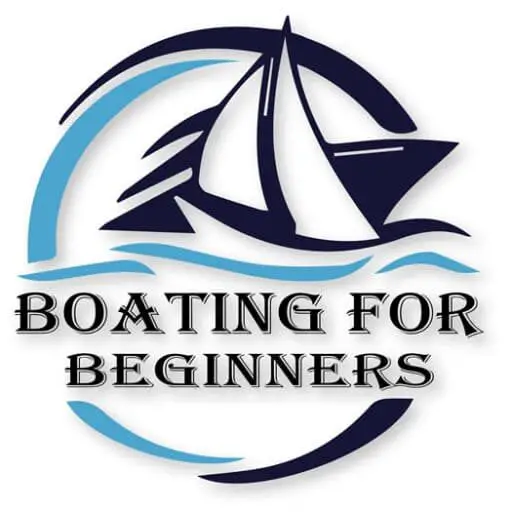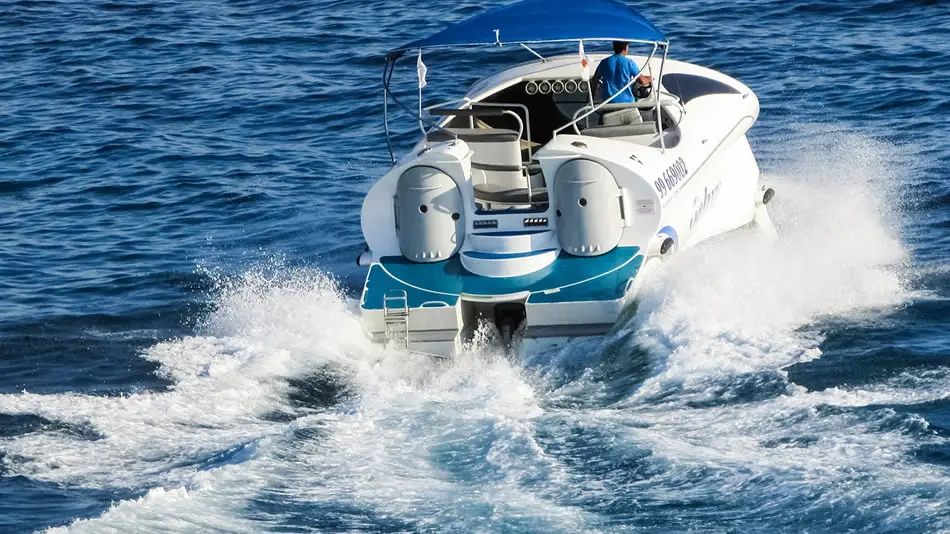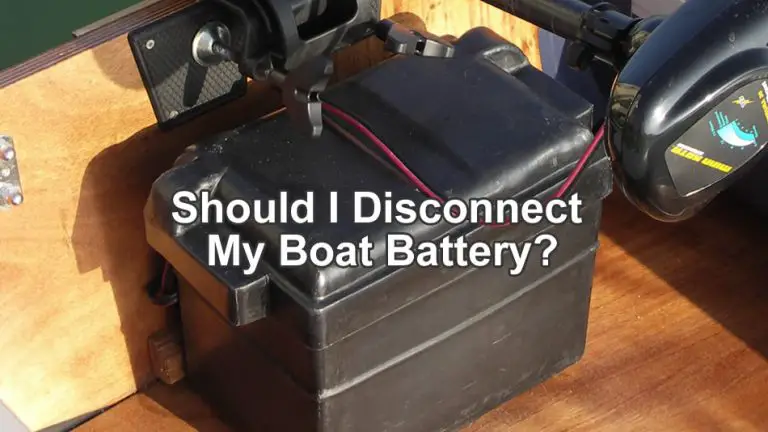What You Should Know to Make Your Boat Go Faster
Deep down I think we all have a love for going fast, and for some people that love for speed shouldn’t be limited to the speed the manufacturer bestows upon you when you purchase your boat. Making your boat go faster is more than just an engine overhaul or buying the most powerful asset on the market! It requires a closer look at dimensions, hull speed, propeller types, and efficiency.
Practical Ways to Make Your Boat Go Faster
There are many different things that you could do to your boat today, to help give it a little extra speed. Some of those changes are minor, while others are quite drastic. Let’s take a look at those below.
- Upgrade your propeller: By just changing your propeller from an aluminum style prop to a stainless steel model, could give you a little gain of about 3 MPH. The stronger the material is in your propeller, the less it’ll flex and bend. Blades that are both strong and thin will cut through the water more efficiently giving you that extra bump in your overall speed.
- Reduce weight: Remove any un-needed gear or supplies from your boat that could be weighing you down. You could even empty the water tanks to help reduce pull. Some people will go as far to just filling up their gas tank half full to help them stay lighter on the water. Those extra seats you have nobody sitting in could also go.
- Blueprinting for speed: Blueprinting is when you return the hull of your boat to the manufacturers original shape and design. Over the years the boat hull will begin to warp and change shape, which will create some drag and limit your top speed. Blueprinting will last roughly two years and will add anywhere between 5 to 10 MPH to your overall high speed.
- Install a boat jack plate: The lower an outboard motor is in the water, the more drag is produced. The way a jack plate is installed is at the back of your boat and raises the outboard motors lower unit, so not as much is hanging in the water, which in turn will reduce your drag and improve the boats overall efficiency. A jack plate could help improve your speed up to 10 MPH.
- Set the trim right: By making sure the trim is set right, by trimming the motor up you could see an increase in your speed. Be careful not to over trim. If you over trim then the propeller will begin to suck down air, and when this happens, it will reduce your speed.
- Set your prop’s pitch: Make sure your prop’s pitch is placed at the upper end of what the manufacturers recommended RMP range is. As your prop spins faster, you could notice a slight increase to your speed.
- Inspect your propeller: Take a look at your propeller and make sure it doesn’t have any dings or damage. You could be losing performance if it is.
- Clear away marine creatures: Barnacles and other little creatures that like to call the bottom of your boat home will change how smooth the bottom is and create drag as you’re moving.
Drastic changes you can make to your engine
- Install a supercharger: If your engines well being is not a concern of yours, then you could look at installing a supercharger. Adding a supercharger is not cheap, and it will void your factory warranty. Not to mention, you will most likely have to change your propeller to accommodate the increased speed. A popular choice to install is a Whipple Supercharger for example, but the price tag on these could range between $4,000 to $11,000.Superchargers are mainly designed for many gasoline inboard and stern drive powerboats. Outboards typically won’t allow them unless they were designed to run with a supercharger. The only outboard that I know of right now that is designed to run with a supercharger is the Mercury Verado 350 and 400R.
- ECU upgrade: You can do what is called an ECU which stands for Engine Control Unit upgrade, to help your engine go faster. What this does is it controls the fuel, timing, spark curve and air flow in most engines. You could either replace the ECU or have your existing one “reflashed” to increase horsepower for outboards, inboards, and stern drives. In some cases, you could increase power from a little as five percent to as much as thirty-five to forty percent. The price to go the route of an ECU upgrade is significantly less than adding a supercharger. However, this will also void your manufacturer’s warranty. It could also require you to change your propeller depending on significant the maximum RPM rises, and the power gain is.
Why Longer Boats are Faster
Have you ever noticed how racing vessels are long and pointy? In a nutshell, the reason they are designed this way is to help the bow cut through the water more natural to create a smaller bow wave. Boats that create larger bow waves tend to go slower than boats that create small bow waves. When a ship is in motion, it cuts through and pushes water out of its way causing the water to form a wave. As the boat speeds up, the wave gets larger until the ship is riding on top of the wave. This is what is referred to as “hull speed”. A longer, more narrow, vessel would create smaller waves, so, therefore, would travel quicker.
Picture two ships traveling in the same direction, at the same Froude number, but each are different lengths. The longer ship would be traveling faster than the shorter vessel because the longer vessel will be creating less wave.
It was in the 1830s that an architect, namely W. Froude, found that making a boat go faster relied on more than just improving the sails and adding a larger engine. He ascertained the only way to gain speed was to increase the length in boat design and shape. Froude concluded that a boat needs to be developed longer at its water line to maximize its speed. Today, Froude’s principles continue to make an appearance in boat design as more racing-style boats incorporate the sleek body for speed.
While many boating enthusiasts have pushed for larger engines in the hope that its capacity will provide a greater force on the water, the gains achieved in performance are minuscule when compared to its drag.
Froude proved his theory of length when putting a 6-foot vessel against a 9-foot vessel. The slimmer 9-foot ship outperformed its 6-foot competitor. If you are looking to redesign or purchase a new boat, a longer, thinner design is sure to provide a speed advantage.
What is Hull Speed?
The hull speed of your boat is the speed at which the wavelength of the vessel’s bow wave is equal to the length of the ship at its waterline. Although hull speed remains an important boating concept, it is not as commonly used as Froude’s numbers or the speed to length ratio that is most beneficial for naval and similar vessels.
Coming back to Froude’s theory, it was in the 1800s that a testing vessel was built at Torquay where various hull types were experimented with to determine overall speed and performance. He discovered the longer and slimmer the boat, the faster its performance.
Through his experimentation, Froude could reveal a relationship between the length of the waterline and the hull speed. According to modern metrics in the world of boating, the hull and waterline speed is referred to as “Froude Numbers.”
What is The Average Boat Speed?
The average boat speed is around 90 miles per hour. These boats are created with a very slender shape and are not propelled by jet engines.
Boat speed matters and is essential when considering the purpose that it will serve in the water. For fishermen who need to move across the open water leisurely, a speed of 15 miles per hour is considered ideal while towboats can run anywhere between 10 and 35 mph.
A Closer Look at the Different Types of Boats and Its Average Speeds
- The standard sailboat moves between 8 and 12 mph in ideal circumstances.
- The pontoon can reach all the way up to 35 mph when conditions are ideal. Other Pontoons that carry more than the average amount of weight will reach 25 mph.
- Cruiser speeds depend on the size and design of the boat and can move comfortably at 16 mph with many cruisers able to reach a capacity of 50 mph.
Although speed can be much desired when out on the open water when cruising closer to the shoreline, these speeds simply cannot be maintained. Speed is not regulated but special consideration for other boat drivers is necessary to prevent accidents.
How is Hull Speed Calculated?
The ratio that was produced by Froude included his speed to length ratio. It was calculated as:
Speed/Length Ratio = The hull speed (knots) divided by the square root of the vessel’s waterline length (feet)
It was this ratio that allowed Froude to calculated the different speeds of various boat types.
He soon discovered that a standard sailboat of 25 feet and performing at 5 knots had an equal S/L ration to that of a 100-foot patrol vessel that was cruising at 10 knots. In effect, both of these vessels would experience equal amounts of resistance for every ton of displacement at these speeds.
When Froude applied his ratios, he found that when there was a lack of a rig above the waterline to produce windage, the resistance would be caused by the drag of the hull and wave making.
It could be calculated as follows:
Top hull speed (knots) = 1.34 of the square root of the waterline in length (feet).
The following figures all pertain to boats that are experiencing displacement.
Average Waterline Length Vs. Boat Speed:
Waterline Length Boat Speed
20 feet 6 knots
40 feet 8.5 knots
50 feet 9.5 knots
Owing to the incredible discovery by Froude, it is possible to determine average hull speed and the overall performance capabilities of specific types of vessels.
Choosing the best type of propeller for your boat depends on the specifications of the vessel, the purpose and the investment you are willing to make. While stainless steel is the most impressive and lasting material for a propeller, it is important to determine the necessity of upgrading your prop. A look at the reasons to change the propeller and the benefits of stainless steel props can assist in making the best boating decisions.
Reasons to Change the Boat Prop
Boat Revs High and Sluggish Performance
When the engine revs past the red line, and the pitch of the propeller too low, it could soon lead to severe engine damage. The addition of a new prop may resolve the issue and provide the support the vessel requires to perform smoothly. The prop used at sea will differ to the prop used along lakes and leisurely cruises.
Higher Fuel Consumption
Create efficiency by installing a contemporary boating prop. When propellers are warped and damaged, it can cost a 10% loss in fuel consumption. The diameter and the pitch of the prop must be considered when designing your boat to become more fuel efficient. You may have to try several props before finding the best one for maximum fuel efficiency.
Make Your Boat Go Faster
To improve the performance of your boat requires a closer look at the propeller. One of the easiest ways to make your boat go faster is to install stainless steel or a more economical aluminum prop where the correct pitch and diameter are present. The proper selection of a prop can increase the speed and performance of boats up to 3 knots.
Here is an article I wrote on how to remove and change a boat propeller.
Will a Stainless Steel Prop Make My Boat Faster?

Stainless steel is considered an investment, and for most boat owners, it will not warp, tarnish or degrade even when operating at higher speeds. Although more expensive than alternatives such as aluminum stainless steel offers a multitude of performance benefits.
The Advantages of a Stainless Steel Prop
The older style of boat propellers included brass and even plastic that was not long-lived and suffered significant damages. Today, the contemporary vessels are incorporating stainless steel because of the multitude of functional qualities it offers for all types of boats.
A significant advantage of incorporating a steel propeller is the longevity it offers. Steel is so durable and in all types of conditions that will justify the costs of expenditure on these additions. It is essential to rely on a solid and sturdy material that will deliver the best solutions and prevent having to replace your prop regularly. Stainless steel is recognized as one of the sturdiest solutions that will protect against future warping and damage to the structure.
If you need to make your boat go faster, then stainless steel is the best option. The slim blade design, the durability and the overall practicality of this material make it a suitable choice for the upgrade of propellers.
Unfortunately, many make the mistake of plastic propellers owing to the cost and versatility. Plastic although economical, is not able to withstand extremes in damage or resistance. Should your vessel have to move through large amounts of debris in the water, plastic props are most likely to suffer damage and even crack. Steel will prevent cracking and rapid deterioration.
Conclusion
To make your boat go faster requires consideration of overall design, propeller blade configurations and creating energy efficiency. According to Froude’s numbers, the slimmer and sleeker the vessel, the higher the speed. Longer boats tend to outperform the broader types of vessels because of its streamlined design. Learning of the importance of these structural features and additions can help you enhance the operational capabilities of your boat. The ultimate goal is to find feasible and safe ways to make your boat go faster.
Although engine capacity is considered one way to increase speed, it is not always a feasible choice and not suitable for many types of boats. One way to make your boat go faster is to scuff the bottom of the ship at an angle of 45◦ as this significantly decreases the boat’s adhesion to the surface of the water.
A propeller change per the diameter and the pitch and from plastic to stainless steel can add efficiency and speed. To make your boat go faster, a thinner prop blade is preferred. You may have to try different propellers to find the one that best works for your vessel. While aluminum is another type of prop that has gained increased attention, it is not as superior as steel. While it is critical to invest in a lasting and reliable addition for your boat, it is also important to work within a suitable budget.
When looking to purchase a new boat, consider its hull speed, length, and overall capacity to find a vessel that will operate efficiently and speedily. To make your boat go faster requires several minor changes but if you can purchase a boat with these features, it can minimize the cost and the time taken to create the ideal water performance.
Boating remains a spectacular hobby and sporting activity. Investing in the quality of your boat’s features and considering overall design, can help you make significant strides in achieving a faster boat.








